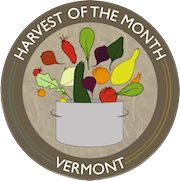Eggs
Humans and other predatory animals have been eating eggs for millions of years. Then, about 5,000 years ago, people in Asia domesticated the first wildfowl. It was so successful that the idea spread worldwide. Later, the Egyptians developed a method to incubate eggs in heated caves, freeing up hens to lay more. In the 1940s, egg farming was industrialized, with larger flocks put in smaller cages. Today, 98% of US eggs come from factory farms, which are cheap for the consumer, but criticized for poor animal welfare, pollution, disease, contamination, unsafe working conditions, and subpar nutrition. In response, the popularity of small-scale egg farms is increasing, and Vermonters, in particular, are at the forefront of putting better eggs back on the menu.
Downloads (PDF):
Reading List:
» Sonya’s Chickens by Phoebe Wahl
» The Chicken-Chasing Queen of Lamar County by Janice N. Harrington
» Wild Eggs: A Story of Arctic Egg Collecting by Suzie Napayok-Short
» Chickens Aren’t the Only Ones by Ruth Heller
» Chickens! Illustrated Chicken Breeds A to Z by Sarah Rosedahl
» Chicks & Chickens by Gail Gibbons


